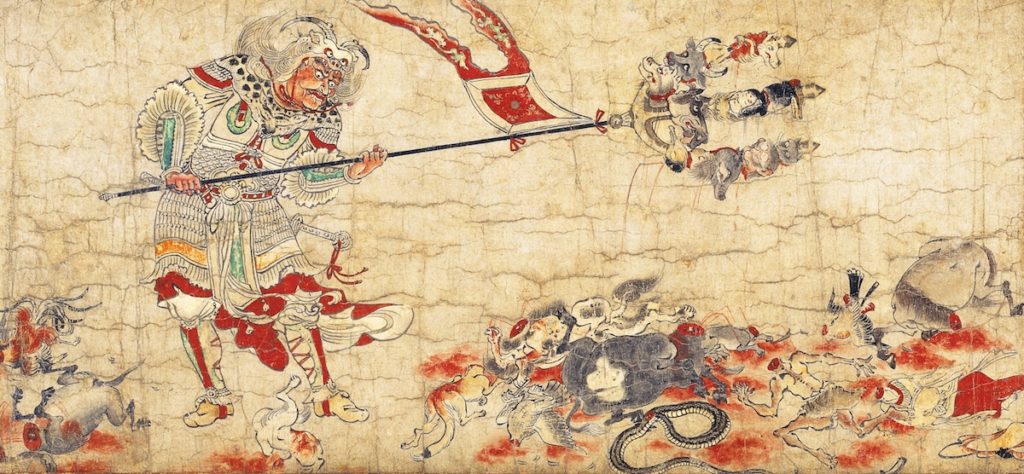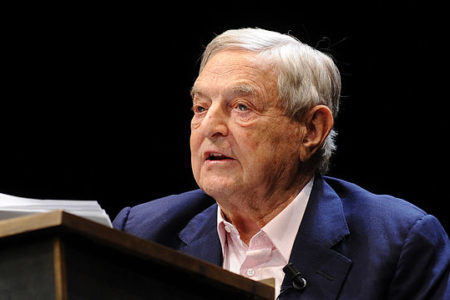
On March 15, a 28-year old an Australian gunman named Brenton Tarrant allegedly opened fire in two Christchurch, New Zealand mosques, killing 50 and wounding 50 more. It was the worst mass shooting in the history of that country. Prime Minister Jacinda Ardern, who was rightly praised for her response to the murders, declared: “While the nation grapples with a form of grief and anger that we have not experienced before, we are seeking answers.”
One answer took form a week later, when Ms. Ardern announced legislation that would ban all military-style semi-automatic weapons, assault rifles and high-capacity magazines. Will such gun-control measures work to reduce gun crime? Maybe. They did in Australia following a 1996 mass shooting in Tasmania in which 35 people were murdered. A 2006 follow-up study showed that in the 18 years prior to the ban, there had been 13 mass shootings. But in the decade following, there had been none. Gun culture is different in every country. But there is at least an arguable case to be made that the newly announced controls will make New Zealand a safer country.
But banning certain tools that may be used to commit murder is one thing. Tarrant’s rampage also has led to calls to block ideas that allegedly fuel murderous extremism. In the immediate aftermath of tragedy, it is understandable that every conceivable means should be employed to prevent a recurrence. But censorship is almost invariably the wrong response to evil actions. You cannot ban evil.
* * *
Before the killings, Tarrant authored a rambling 74-page manifesto titled The Great Replacement. The document is difficult to find online, as most platforms took to blocking it as soon as its appearance was flagged. I was quick to grab a copy early on, however, because such documents inform my longstanding research into extremist groups and ideologies.
The Great Replacement was inspired by a 2012 book of the same title by the French author Renaud Camus—a right-wing conspiracy theorist who claims that white French Catholics in particular, and white Christian Europeans in general, are being systematically replaced by people of non-European descent, especially from Africa and the Middle East, through immigration and higher birth rates. The manifesto is filled with white supremacist fearmongering. “If there is one thing I want you to remember from these writings, it’s that the birthrates must change,” the author tells his audience (whom he presumes to be white). “Even if we were to deport all Non-Europeans from our lands tomorrow, the European people would still be spiraling into decay and eventual death.” The result, he concludes apocalyptically, is “white genocide.”
Like many cranks and haters of this type, Tarrant has a weakness for codes and slogans. He references the number 14 to indicate the 14-word slogan originally coined by white supremacist David Lane while imprisoned for his role in the 1984 murder of Jewish radio talk show host Alan Berg: “We must secure the existence of our people and a future for white children.” Lane, for his part, explicitly extolled the writings of white supremacist William Pierce, who in turn inspired Timothy McVeigh to blow up the Oklahoma City federal building in 1995, killing 168 people.
Accusations of racism and white supremacism are thrown around so casually these days that the meaning of these terms has become diluted and ambiguous. So, for clarity, I will state the obvious by emphasizing that the writings of Tarrant, Lane and Pierce all reflect attitudes that are completely racist and hateful, as such terms are properly used.
And yes, there is a connection with Nazism. The number 14 is sometimes rendered as 14/88, with the 8’s representing the eighth letter of the alphabet—H—and 88 or HH standing for Heil Hitler. Lane, who died in 2007, was inspired by Mein Kampf, in which the Nazi Party leader declared: “What we must fight for is to safeguard the existence and reproduction of our race and our people, the sustenance of our children and the purity of our blood, the freedom and independence of the fatherland, so that our people may mature for the fulfillment of the mission allotted it by the creator of the universe.”
But even here, the bibliographical trail of hatred doesn’t end—because Hitler copied much of his anti-Semitic conspiracism from The Protocols of the Learned Elders of Zion, a tragically popular hoaxed document purporting to record the proceedings of a secret meeting of Jews plotting global domination. Nor was the Protocols itself conceived out of thin air: It was plagiarized from Biarritz, a luridly anti-Semitic 19th-century novel; and a propaganda tract called Dialogues in Hell between Machiavelli and Montesquieu, which had been written by a French lawyer as an act of protest against Louis-Napoléon Bonaparte; both of which, in turn, drew on anti-Semitic tropes going back to Roman times. So if you’re looking to root out and ban the political ideology that produces Jew hatred, you’re going to have to purge whole library shelves. The same goes for Islamophobia, anti-black racism, and virtually every other kind of bigotry you could name.
And yet, there are those who argue that mass censorship is justified in the name of heading off hateful indoctrination. That group apparently would include leaders of the Whitcoulls bookstore chain in New Zealand. Late last week, the company announced it was banning one popular book, “in light of some extremely disturbing material being circulated prior, during and after the Christchurch attacks.” Yet the book wasn’t Mein Kampf, which you can still buy on the company’s site for $44.95—or anything of its ilk. Rather, the chain is boycotting Jordan Peterson’s 12 Rules for Life, a self-help book that has no connection at all with the mosque attacks or their perpetrator.
What is the “extremely disturbing material” in Peterson’s book? Whitcoulls doesn’t say. I’ve read the entire book, along with much of the University of Toronto professor’s 1999 massive first book, Maps of Meaning. And I’ve watched many of his YouTube videos and media interviews. I have yet to find anything remotely reminiscent of white supremacy, racism, anti-Semitism or Islamophobia.
On Twitter, I suggested that those who think Peterson is the ideological culprit behind the New Zealand massacre have lost their minds. I added that I’m no toady for Jordan Peterson, inasmuch as I disagree with him on many subjects—including his theory of truth, and his largely uncritical endorsement of religious myths as an organizing principle for human cultures. But the banning of Peterson on any theory related to preventing mass murder doesn’t even rise to the level of wrong: It’s demonstrably absurd—akin to banning spoons and skateboards as a strategy to stave off prospective arsonists.
When I asked my social-media followers for examples of anything Peterson had said or done that could be construed as inviting mass murder, the only remotely relevant responses I got pointed to photos that random fans had taken with Peterson, one of which featured a guy sporting a t-shirt proclaiming himself to be an “Islamaphobe,” and another (more ambiguous) example of someone holding a Pepe the Frog banner. But this proves nothing. Peterson has taken photos with tens of thousands of people at public events in recent years. In a typical fan-photo cattle call, fans are cycled into frame with a celebrity roughly every five or six seconds—typically by handlers, not the celebrity acting in his or her personal capacity. I’ve done a number of these during book tours and can attest to the fact that it’s completely unrealistic to think that Peterson could screen the clothes worn by all these legions of photo seekers for ideological purity—even if this were something he aspired to do.
On March 23, I received an email from Change.org, the left-leaning political action group whose stated mission is to “empower people everywhere to create the change they want to see.” In this case, the change users wanted to see in response to the New Zealand massacre was… to ban PewDiePie from YouTube. “One of the largest platforms for white supremacist content is PewDiePie’s YouTube channel,” the petition informs us. “PewDiePie has on many occasions proven once and again to promote and affiliate himself with white supremacist and Nazi ideologies.” The petitioners then list the YouTuber’s alleged sins, including using the N-word, playing videos of Adolf Hitler’s speeches, and giving the Nazi heil in a video.
For those unaware, PewDiePie is a Swedish comedian and video game player named Felix Arvid Ulf Kjellberg, whose YouTube channel has a massive following and whom Tarrant referenced in his manifesto (along with Candace Owens, Donald Trump and others). It is true that PewDiePie once used the N-word during a video game competition (and then apologized profusely for doing so). He also has used brief audio and video snippets of Nazi imagery as part of satirical responses to attacks against him that he lampooned as melodramatic. The idea that any of this betrays PewDiePie as a closet white supremicist is absurd. Even without Change.org’s urging, YouTube already has demonetized the videos of such avowedly anti-racist and anti-supremacist moderates as Dave Rubin and Gad Saad, as well as anti-anti-Semite conservatives such as Dennis Prager. YouTube is acting on an ideological hair trigger: If there were any evidence whatsoever that PewDiePie had expressed real Nazi sympathies, he would have been axed from the platform long ago.
Responding to evil by banning random controversial authors or YouTubers is completely irrational. But that doesn’t make it inexplicable. Manifestations of great evil provoke a desire to do something—anything—to reestablish moral order. Remember when millions of people tweeted #BringBackOurGirls after the terrorist organization Boko Haram kidnapped dozens of Nigerian students in 2014? Murderous rapists don’t give a fig about being mobbed on Twitter. But it made people feel useful for an instant—as if they had done something. We all entertain some version of this instinct in times of tragedy—a reflex satirized by The Onion in the days after 9/11 with the headline Not Knowing What Else To Do, Woman Bakes American-Flag Cake.
Intertwined with this instinct is the idea that there is some abstract force called evil that exists in the cosmos, a force that we are all called upon to confront and defeat. As I argued in my 2003 book, The Science of Good and Evil, this belief—that pure evil exists separately from individuals—is a myth. “Evil” makes literal sense as an adjective, but not as a noun (except in a figurative sense), because there is no quantum of something called “evil” that exists in human hearts, or, indeed, anywhere else.
Thus concluded social psychologist Roy Baumeister, as reported in his 1997 book about serial killers and other career criminals, Evil: Inside Human Violence and Cruelty. Ironically, Baumeister found that the myth of evil existing as a standalone force may, itself, lead societies to become more violent: “The myth encourages people to believe that they are good and will remain good no matter what, even if they perpetrate severe harm on their opponents. Thus, the myth of pure evil confers a kind of moral immunity on people who believe in it…belief in the myth is itself one recipe for evil, because it allows people to justify violent and oppressive actions. It allows evil to masquerade as good.”
This helps explain the grimly bizarre manner by which violent criminals and terrorists find ways to justify even the most horrifying and nihilistic acts. Consider this 1994 police record of Frederick Treesh, a spree killer from the Midwest who explained, “Other than the two we killed, the two we wounded, the woman we pistol-whipped, and the light bulbs we stuck in people’s mouths, [my accomplice and I] didn’t really hurt anybody.” After killing 33 boys the serial killer John Wayne Gacy explained: “I see myself more as a victim than as a perpetrator. I was cheated out of my childhood.”
Modern campaigns aimed at shutting down this or that speaker implicitly present evil as something that may be communicated from one person to another, like bacteria. By this model, censorship is akin to quarantine. But Baumeister tells us “you do not have to give people reasons to be violent, because they already have plenty of reasons. All you have to do is take away their reasons to restrain themselves.” It is absolutely true that some extremist ideologies can encourage adherents to abandon the sense of restraint that Baumeister describes. But the campaign to ban the likes of Jordan Peterson and PewDiePie—individuals whose work bears no relationship at all to the extreme forms of hatred we should be most concerned about—suggests that censors aren’t actually thinking through such propositions. Instead, they seem to be operating on the idea of evil as a quasi-mystical force akin to Satan. In this conception, Peterson and PewDiePie are seen as carriers of evil, much like witches channeling demons from below, no matter that they never actually say or do anything evil in nature.
As Baumeister argued, this mythical idealization of evil as being an actual force in our universe, rather than a descriptor of human motivations, isn’t merely harmless ersatz spiritualism: It causes people to act worse, sometimes murderously so, by allowing them to imagine the locus of evil as lying completely outside their own intentions and actions.
Which gets to the (necessarily political) question of who should be identified, stigmatized, and even punished for being a “carrier” of evil? Who gets to define that class of people? Me? You? The majority? An evil-thought committee? The government? Social-media companies? We already have law enforcement and the military to deal with evil deeds. Controlling evil thoughts is far more problematic.
Campaigns aimed at banning evil in its own (mythical) right almost always include efforts to ban evil speech—or even, as in the aftermath of the New Zealand mass murder, speech from someone who has not said anything remotely evil, but is seen, in some vague sense, to be contaminated by evil. When western societies were religious, evil speech was tantamount to anti-Christian speech. In a secular age, we call it “hate speech,” a reformulation that does nothing to solve the always contentious issue of distinguishing between evil speech and free speech, and the problem of who gets to decide where one ends and the other begins.
It is my contention that we must protect speech no matter how hateful it may seem. The solution to hate speech is more speech. The counter to bad ideas is good ideas. The rebuttal to pseudoscience is better science. The answer to fake news is real news. The best way to refute alternative facts is with actual facts. This is just as true now as it was in the moment before 50 innocent Muslim lives were taken in New Zealand—even if our emotionally felt need to put a name and form to evil now makes this truth harder to see.
via Quillette






Ernie
A CORRECT answer to your question near the end, explains everything and gives the real solution to the societal dilemma you ponder. You ask, “Which gets to the (necessarily political) question of who should be identified, stigmatized, and even punished for being a “carrier” of evil?” First off, evil as a cause has nothing to do with politics. If you correctly surrender to our loving Father God, agree with HIS ultimate definition of what is Good (Godly) and Evil, then you will have all the answers. Rather than deny the Creator (which is at it’s core why evil springs out of our own sinful nature), we can then live in harmony with Him and with each other. Without Him, there is just chaos.